Scotland's Marine Atlas: Information for The National Marine Plan
Scotland's Marine Atlas is an assessment of the condition of Scotland's seas, based on scientific evidence from data and analysis and supported by expert judgement.
MICROBIOLOGICAL CONTAMINATION
Monitoring requirements
Microbiological regulation and monitoring is driven by the risk to public health from contact with pathogens indicated by the presence of faecal indicator organisms of either human or animal origin. The EU Bathing Waters Directive (76/160/ EEC) sets standards for faecal indicator organisms in waters at designated bathing beaches. Bathing beaches are designated on the basis of their recreational use and hence risk to the public of exposure to faecal indicator organisms. The Shellfish Waters Directive (2006/113/ EC) sets standards for faecal coliforms in shellfish in designated waters. Shellfish Waters are areas where water quality must be protected or improved to protect shellfish growth and contribute to assuring the quality of shellfish for human consumption. The European food hygiene legislation (primarily regulation ( EC) No. 854/2004 as amended for shellfish hygiene) sets standards in shellfish marketed for human consumption.
Standards in bathing waters
Bathing water quality is assessed by the presence of total and faecal coliforms and faecal streptococci. If swallowed in sufficient quantities by people in contact with water, faecal coliforms can cause stomach upsets and ear infections. These indicator organisms are analysed in 10 to 20 water samples collected at designated beaches over the course of each official bathing season (1 June to 15 September). The results are assessed against European standards to give an overall category of "guideline" pass, "mandatory" pass, or "fail" at the monitored beaches.
Standards in shellfish
The Shellfish Waters Directive sets a guideline standard of < 300/100ml faecal coliforms in shellfish flesh in designated Shellfish Waters. The Directive specifies that samples are collected quarterly and that this value must not be exceeded in 75% of samples, for compliance.
The shellfish hygiene regulations classify areas where shellfish are produced for human consumption. Shellfish hygiene sites are assigned into different classes based on the E. coli. content of the shellfish flesh.
In Scotland, results obtained from the analysis of samples for the shellfish hygiene regulations by the Food Standards Agency in Scotland ( FSA(S)) are used to assess compliance with the guideline standard of the Shellfish Waters Directive, where the waters overlap. The shellfish hygiene Class A standard is similar to the Shellfish Waters guideline standard and the samples reflect the quality of shellfish for human consumption. In 2009 the majority of Shellfish Waters (62 from 78) in Scotland were assessed using shellfish hygiene data.
How good is bathing water quality in Scotland?
In 2009, 94% of bathing waters achieved the "mandatory" standard and more than half achieved the better "guideline" standard. It is not possible to determine trends in compliance between 1988 and 2009, as the number of designated bathing beaches has increased from 23 to 77. However, compliance with the "mandatory" standard at the original 23 sites rose from 52% in 1998 to 86% in 2009 indicating that water quality has improved at the original sites. Although bathing water quality appears to have improved, some beaches do not meet the minimum "mandatory" standard every year.
Trends in compliance with mandatory and guideline standards at designated bathing beaches in Scotland
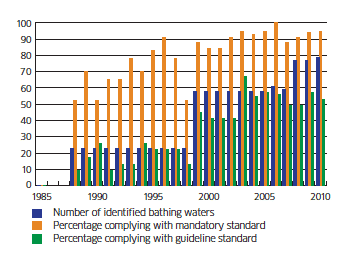
Source: SEPA
2009 Bathing Waters Results
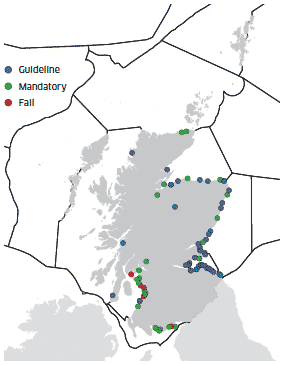
Bathing water sampling
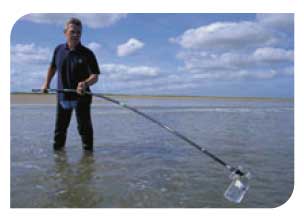
© SEPA
Guideline and Mandatory standards for faecal indicator organisms in Bathing Waters
Level of pass |
Total coliforms |
Faecal coliforms |
Faecal streptococci |
|---|---|---|---|
"Guideline" |
80% of samples should not exceed 500 total coliforms per 100 ml |
80% of samples should not exceed 100 faecal coliforms per 100 ml |
90% of samples should not exceed 100 faecal streptococci per 100 ml |
"Mandatory" |
95% of samples should not exceed 10,000 total coliforms per 100 ml |
95% of samples should not exceed 2,000 faecal coliforms per 100 ml |
The directive contains no mandatory standard for faecal streptococci |
Classification under Shellfish Hygiene Regulation ( EC) No. 854/2004
Classification |
Permitted Levels |
Outcome |
|---|---|---|
A |
= 230 E.coli/100g of flesh and intervalvular liquid. |
May go direct for human consumption |
B |
= 4,600 E.coli/100g of flesh and intervalvular liquid in 90% of samples |
Purification or relaying for 2 months (or heat treatment by approved process) |
C |
= 46,000 E.coli/100g of flesh and intervalvular liquid. |
Must be re-laid for a period of at least 2 months, followed, where necessary, by treatment in a Purification centre to meet Category A requirements |
Shellfish water quality
In 2009 56 percent of designated Shellfish Waters achieved the guideline standard for faecal coliforms in shellfish flesh. This is comparable with previous years however is not possible to determine trends in the quality of Shellfish Waters in Scotland as the number of designated sites changed from 20 in 1981 to 78 in 2009 and some of the original sites were de-designated as they no longer contained shellfisheries.
Shellfish harvesting sites are generally located within designated Shellfish Waters although some are not and there may be more than one harvesting area within a designated Shellfish Water. Many harvesting sites are given seasonal classification of A for part of the year (usually winter) and B for the rest of the year to reflect the seasonal changes in micro-organisms. In 2009 approximately 40% of harvesting sites were Class A all year round and the remaining sites were Class B for part or all of the year. The number of shellfish harvesting sites varies annually as sites move in to and out of production so it is difficult to determine trends in the data.
How do people know when it is safe to bathe or eat shellfish?
Signs posted at beaches provide daily forecasts of predicted water quality. Electronic signage was available at 11 beaches in Scotland during the 2009 bathing waters season. The guidance provided by the signs was shown to be accurate 98% of the time. Preparations are underway to expand this notification system.
Only shellfish which achieve Class A, either directly or following treatment are made available for human consumption to minimise the risk to public health.
Bathing water sign
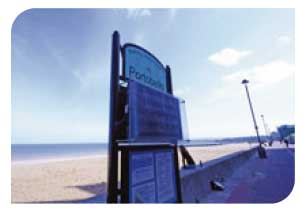
© SEPA
Sources of faecal indicator organisms
Faecal indicator organisms exist in human sewage and in traces of animal faeces which may be washed from farmland during periods of wet weather. Animal faeces from a single source may not seem important, but across a whole catchment these diffuse sources can have serious implications for nearby waters. Water quality is particularly at risk following heavy rainfall, as this washes potentially polluting material from land into surrounding watercourses.
Sources of contamination
It is very difficult to distinguish between human and animal sources of contamination. Recently DNA matching techniques for microbial source tracking ( MST) have been developed by specialist laboratories. MST can indicate whether the pollution in a particular sample has potentially arisen from human or animal sources. This information can then be used to manage the input at source either by improvements to sewage effluent treatment and storm overflows or by preventing animal faeces from entering water courses.
Improvements can be focussed on the main source of bacteria once it has been identified. Scottish Water is continuing to upgrade the sewerage network to improve compliance at beaches and Shellfish Waters affected by sewage discharges. River Basin Management Plans are being used to prevent contamination from animals entering water courses by fencing off water courses and spreading slurry in dry weather where diffuse inputs are a problem.
Inverboyndie Beach
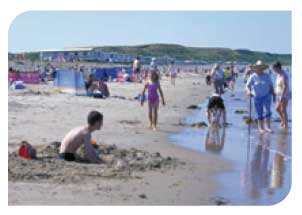
© SEPA
Achievement of the "guideline" standard for faecal coliforms in shellfish flesh in 2009
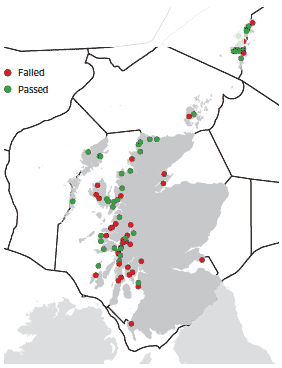
2009/10 FSA(S) Shellfish Classification
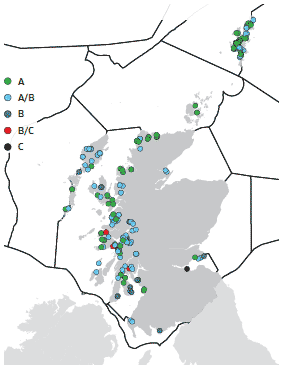
Loch Eriboll Shellfish Water
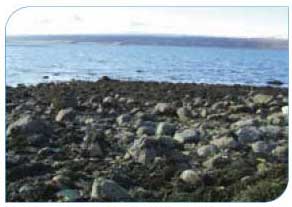
© SEPA
There is a problem
Thanks for your feedback